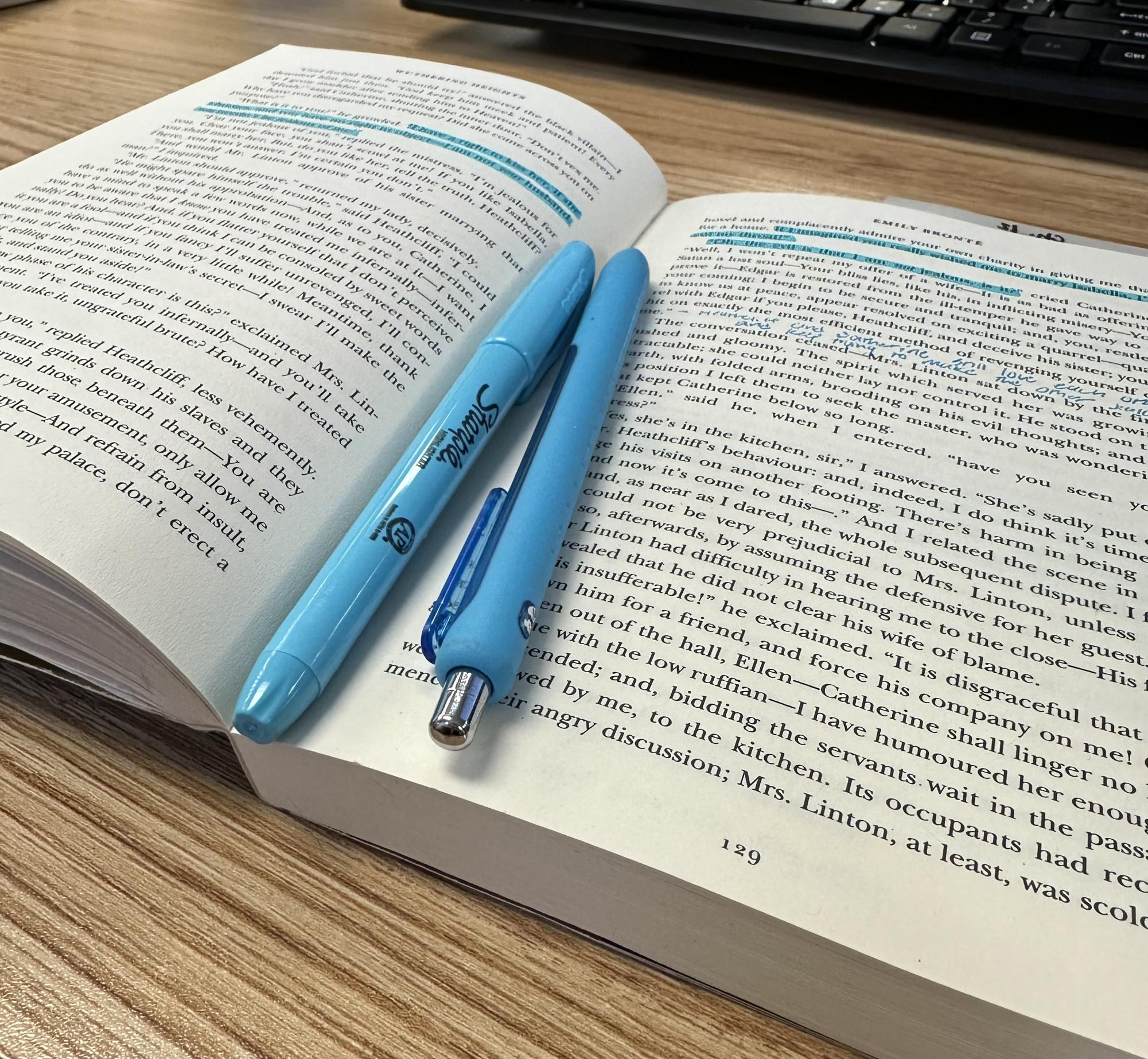Why annotate?
Annotating books along with reading them allows for a deeper understanding of the content. How to Mark a Book by Mortimer J. Adler discusses the importance of reading and writing “between the lines” in order to effectively grasp the material and interact with a book. According to Adler, annotating keeps you awake and involved, promotes active reading, and facilitates conversation between you and the text.
How to Properly Annotate:
While there are many methods of annotating, it is important to pick the one that is best for you. Some benefit from the use of sticky notes and highlighters to point out important details. Others prefer just underlining and writing notes in the margins. Regardless of what you prefer, there are specific things you should be doing while annotating; The Learning Center UNC provides the following basic guidelines for annotating:
- Use headings and bold text to guide your reading process.
- Identify key ideas, arguments, and supporting evidence in the text.
- Observe the structure: Is the text arranged chronologically or does it follow a different pattern like an idea tree?
- Consider what vocabulary might be useful to review after reading.
- Pay attention to terms frequently used in class lectures and notice when similar concepts are described with different words. Ask yourself, why the variation in terms?
- Engage actively with the content, allowing these questions to enhance your understanding.
- Refer to the reading comprehension handout for helpful examples.
- When highlighting, do so intentionally. Check the strategic highlighting resource for advice on when and how to highlight.
- Use ? to mark areas of uncertainty or topics you want to investigate further.
- Use ! to highlight interesting points, connections, or notable insights.
- Use * to mark information that could be used as evidence or examples in future discussions.
- Reflect on what other symbol systems might help you better organize your thoughts.
What to Annotate:
The STA school website lists the following in the guide of what to annotate:
- Where essential information and ideas are in the text
- Character development
- Themes
- Plot
- Main idea
- Development of ideas/arguments
- Personal thoughts and reactions







